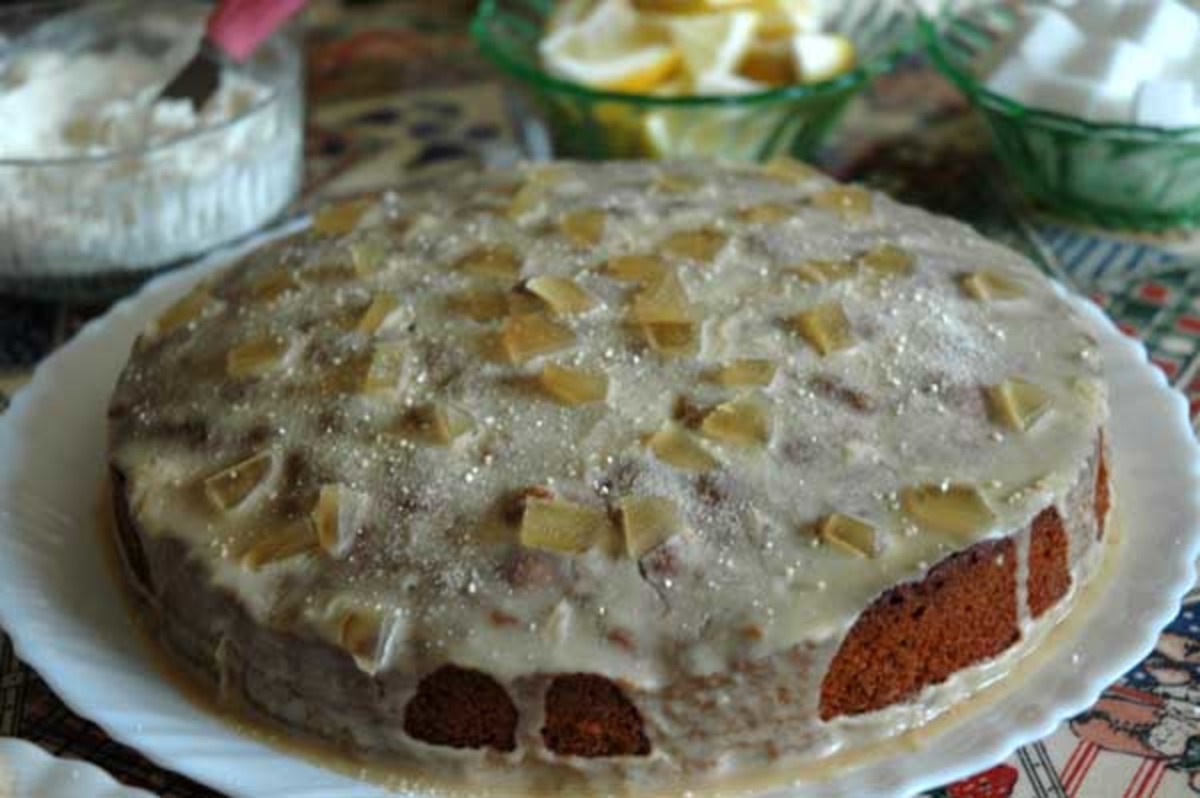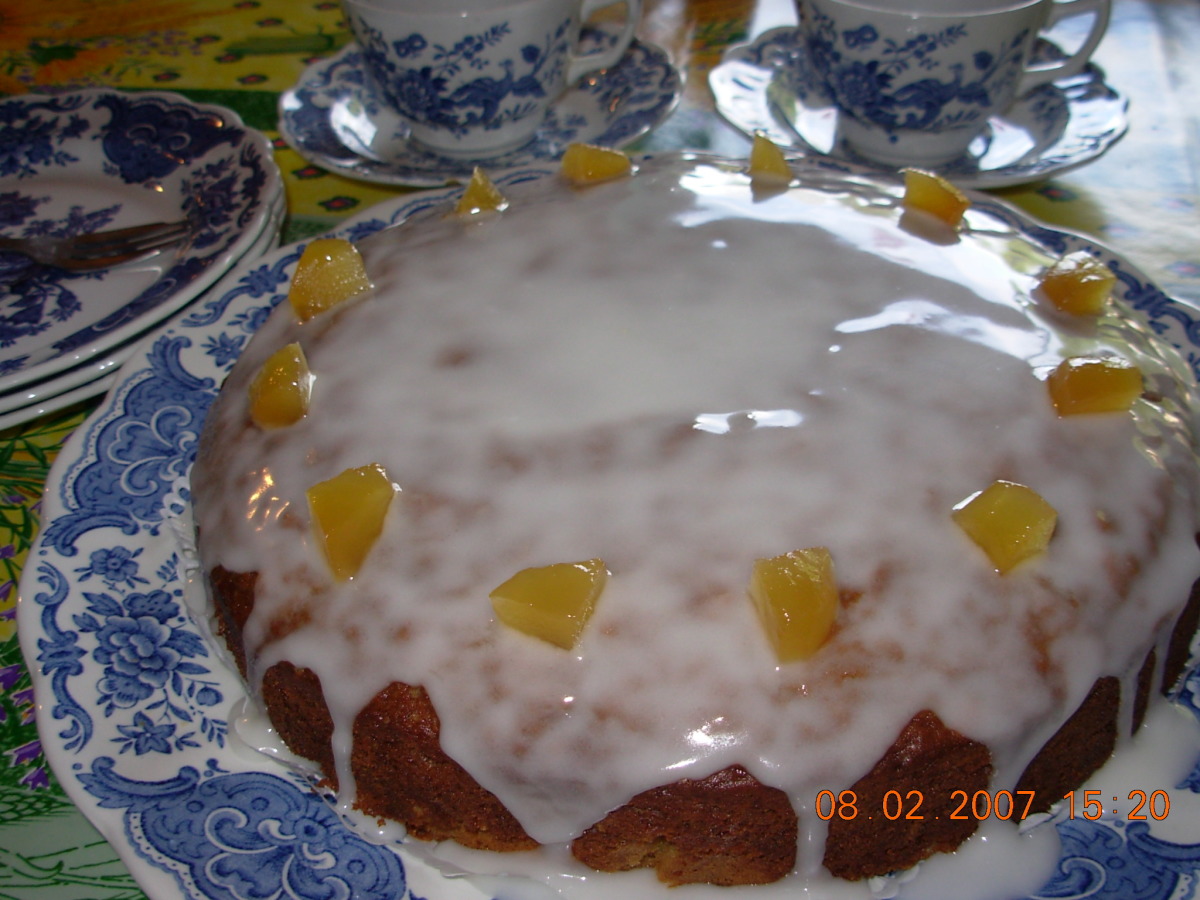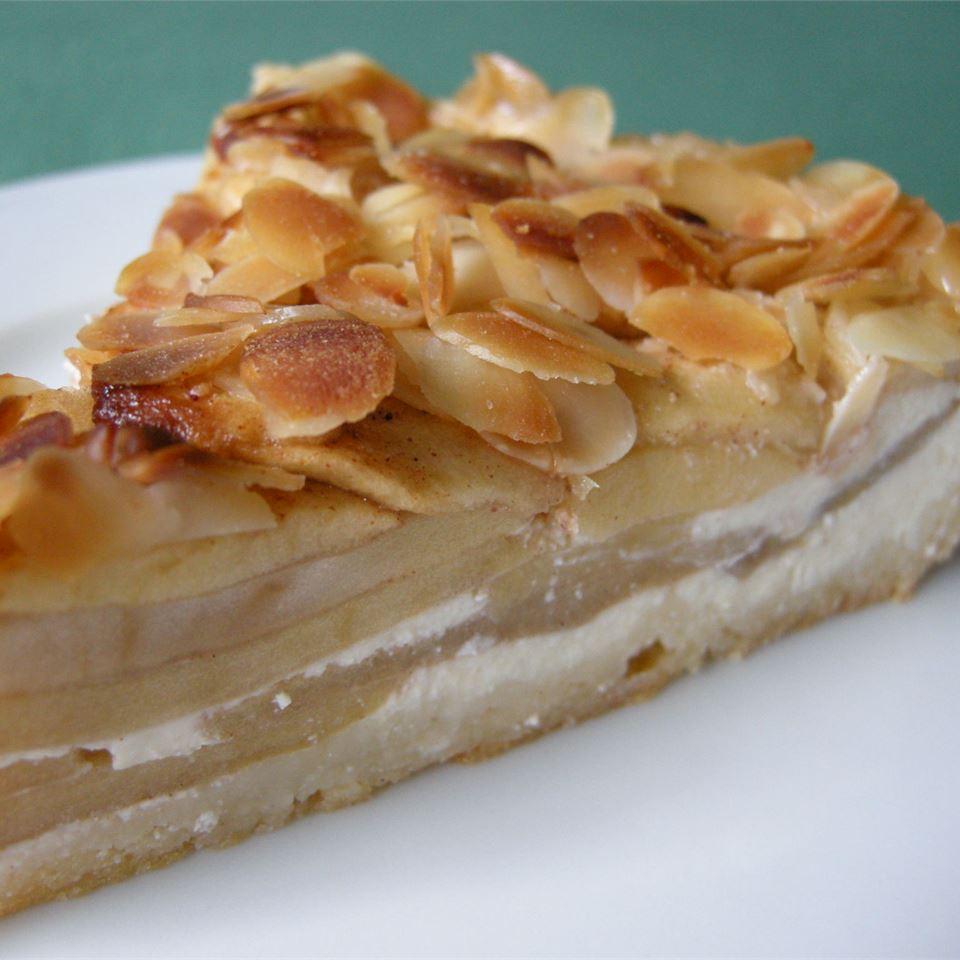Indulge in the sweet and spicy symphony of flavors with Preserved Ginger Cake, a delightful treat that tantalizes your taste buds. This exquisitely moist cake is infused with the warmth of ginger, creating a harmonious balance between sweetness and a hint of piquancy. Prepare to embark on a culinary journey as we present three enticing recipes that showcase the versatility of preserved ginger in baking. Dive into the classic Preserved Ginger Cake, where chunks of crystallized ginger add a delightful textural contrast. For a gluten-free option, explore the wonders of our Gluten-Free Preserved Ginger Cake, a symphony of flavors that caters to dietary preferences. And for those seeking a vegan alternative, the Vegan Preserved Ginger Cake awaits, promising a delectable experience without compromising on taste.
Let's cook with our recipes!
PRESERVED GINGER CAKE WITH LEMON ICING GLAZE

This is quite simply our favorite cake. It's simple but absolute heaven. The spiciness of the ginger within the moist cake, coupled with the sharpness of the lemon icing, is such that it never fails to please all who eat it. It is a typical British cake and very different from North American style cakes.
Provided by MarieRynr
Categories Dessert
Time 1h15m
Yield 15 serving(s)
Number Of Ingredients 14
Steps:
- First prepare the cake tin by greasing it lightly and lining it with the silicone paper: press it into the tin, folding the corners in to make it fit neatly.
- The paper should come up 1 inch (2. 5 cm) above the edge.
- Preheat oven to 325*F.
- To make the cake, take a large mixing bowl and cream the butter and sugar together until light and fluffy.
- Next break the eggs into a jug and beat them with a fork until fluffy, then gradually beat them into the mixture, a little at a time, until all the egg is incorporated.
- Next fold in the ginger syrup and molasses; the best way to add the molasses is to lightly grease a tablespoon, then take a tablespoon of molasses and just push it off the spoon with a rubber spatula into the mixture.
- Sift the flour and ground ginger on to a plate, then gradually fold these in, about a tablespoon at a time.
- Next fold in the almonds, followed by the milk, and lastly the grated root ginger and pieces of stem ginger.
- Spread the cake mixture evenly in the cake tin, then bake on the middle shelf of the oven for 45-50 minutes, or until the cake is risen, springy and firm to touch in the centre.
- Leave the cake to cool in the tin for 10 minutes, then turn it out on to a wire rack and make sure it is absolutely cold before you attempt to ice it.
- For the icing, sift the icing sugar into a bowl and mix with enough of the lemon juice to make the consistency of thick cream - you might not need all the lemon juice.
- Spread the icing over the top of the cake, and don't worry if it dribbles down the sides in places, as this looks quite attractive.
- Cut the remaining ginger into 15 chunks and place these in lines across the cake so that when you cut it you will have 15 squares, each with a piece of ginger in the centre.
- It's absolute heaven.
- If you'd like one or two of these cakes tucked away for a rainy day, they freeze beautifully - simply defrost and put the icing on half an hour before serving.
ENGLISH HIGH TEA PRESERVED GINGER DRIZZLE CAKE

If you like ginger & especially ginger cakes, this is the one for you! This is the most moist and delectable ginger cake I have ever tasted! An old friend of my Mum's gave the recipe to her and she passed it on to me - it is a bit like Chinese Whispers, much changed and adapted since my Mum's friend scibbled it on the back of a napkin over 20 years ago, but still a firm favourite! It is the definitive style of a typical English High Tea Cake........get out your prettiest cake stand and your best Tea Set. At Easter time, I often cyrstalise some violets from the garden and decorate the cake with them, it looks wonderful & very spring like! NB: The size of the tin is VERY important in order to achieve a deep, moist cake.
Provided by French Tart
Categories Dessert
Time 1h10m
Yield 1 Ginger Cake, 12 serving(s)
Number Of Ingredients 15
Steps:
- You will need a non-stick round cake tin measuring 8", at least 1"deep, and some silicone paper (parchment).
- Pre-heat the oven to gas mark 180C/350F/gas4.
- First, prepare the cake tin by greasing lightly and lining it with the silicone paper: press it into the tin, folding the corners in to make it fit neatly - the paper should come up 1 inch above the edge.
- To make the cake, in a large pan, gently melt the butter with the sugar, golden syrup & black treacle over a low to medium heat.
- Cool briefly & stir in the milk.
- Beat the eggs into the mixture & add the chopped stem ginger - mix well.
- Sift in the flour into a bowl and combine thoroughly, then add the ground ginger, baking powder & freshly grated ginger root. Combine thoroughly.
- Pour the cake mixture into the prepared cake tin & spread the cake mixture evenly in the cake tin.
- Bake on the middle shelf of the oven for 45-50 minutes, or until the cake is risen, springy and firm to touch in the centre.
- Take the cake out of the oven & prick all over with a skewer or a toothpick; pour the ginger syrup over the cake, making sure it all sinks down into the holes.
- Leave the cake to cool in the tin for 60 minutes, then turn it out onto a wire rack and make sure it is absolutely cold before you attempt to ice it.
- For the icing, sift the icing sugar into a bowl and mix with enough of the lemon juice to make a consistency of thick cream - you might not need all the lemon juice.
- Now spread the icing over the top of the cake, and do not worry if it dribbles down the sides in places, as this looks quite attractive.
- Cut the remaining ginger into 12 pieces & arrange around the edge of the cake so that when you cut it you will have 12 slices, each with a piece of ginger in the centre.
- If you would like one or two of these cakes tucked away for a rainy day, they freeze beautifully - simply defrost and put the icing on half an hour before serving.
Nutrition Facts : Calories 373.3, Fat 15, SaturatedFat 9.1, Cholesterol 72.6, Sodium 500.4, Carbohydrate 56.9, Fiber 0.8, Sugar 33.8, Protein 4.1
Tips:
- Prep the Ginger: Before using, rinse the preserved ginger under cold water and pat dry. Cut into small pieces or thin slices, depending on your preference.
- Choose the Right Pan: For best results, use a well-seasoned cast iron skillet or a non-stick pan for frying the ginger.
- Control the Heat: Keep the heat at medium-low when frying the ginger. This will help prevent burning and ensure even cooking.
- Don't Overcrowd the Pan: Avoid overcrowding the pan with ginger pieces. This will prevent them from cooking evenly and becoming soggy.
- Season to Taste: Once the ginger is cooked, taste it and adjust the seasoning accordingly. You may want to add more sugar or ginger syrup for a sweeter flavor, or a pinch of salt for balance.
Conclusion:
Preserved ginger adds a unique and delicious flavor to both sweet and savory dishes. Whether you're using it as a topping, filling, or ingredient, it's sure to elevate your culinary creations. With its vibrant color and sweet-spicy taste, preserved ginger is a versatile and flavorful addition to any pantry. Experiment with different recipes and discover new ways to incorporate this delightful ingredient into your cooking. From classic desserts like Preserved Ginger Cake to savory dishes like Stir-fried Beef with Preserved Ginger, the possibilities are endless. So, get creative, embrace the unique flavor of preserved ginger, and enjoy the delicious results!
Are you curently on diet or you just want to control your food's nutritions, ingredients? We will help you find recipes by cooking method, nutrition, ingredients...
Check it out »
You'll also love






